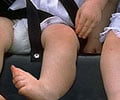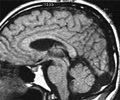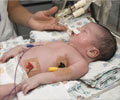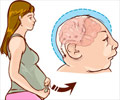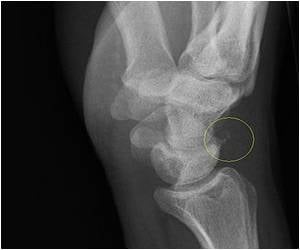A way to create three-dimensional maps of the stress that circulating blood places on the developing heart in an animal model has been devised by researchers.

Passing blood cells drag on the endothelial cells that line the growing heart, a phenomenon called shear stress, which has been linked to changes in gene expression that results in defects, most often in the valves. But precisely how they're connected is unclear.
"Alcohol exposure may affect shear stress by modulating the heart rate, but it may also involve vigor and/or timing of the contraction," said Andrew Rollins, associate professor of biomedical engineering and senior author of the new study. "Now that we have the tool, we can start to figure that out."
"We're analyzing early and late development of the heart and trying to make the connections that result in valve dysfunction," said Lindsy M. Peterson, a PhD student in Rollins' lab and lead author. Their work is published in the current online issue of the Optical Society of America's journal Biomedical Optics Express.
The pair teamed with research assistant professor Michael W. Jenkins; senior research associate Shi Gu; Lee Barwick, an undergraduate researcher now at Brigham Young University; and Michiko Watanabe, a professor of pediatrics at Case Western Reserve School of Medicine.
To look at the structure of the developing heart and blood flow, the researchers modified a technology called Doppler optical coherence tomography. Called OCT for short, they shine an infrared laser on the heart.
Advertisement
They take their first images at two days, during a stage of heart development called cardiac looping. This is when the simple straight tube that's an embryo heart turns clockwise into a helix, forming the beginnings of two atria and two ventricles. They take more images at three days and again at eight days, when the septum, the wall between the left and right sides of the heart, has formed.
Advertisement
They are exposing the model to alcohol at a stage called gastrulation, when the embryo changes from two sheets of cells to a multi-layered organism.
This is a critical stage for induction of birth defects, Peterson said. In humans, it's an early stage when a woman may not know that she is pregnant.
Rollins said clinical applications are a long way off but the team has begun talking about possibilities.
"If it became feasible to screen a fetus for abnormal heart function," he said, "it might be possible to intervene with drugs, with gene therapy." Or, by using non-invasive pulses of infrared light to make the heart contract on demand – another technology the team is developing with clinical colleagues in Pediatric Cardiology– to prevent or treat defects before birth.
Source-Eurekalert





